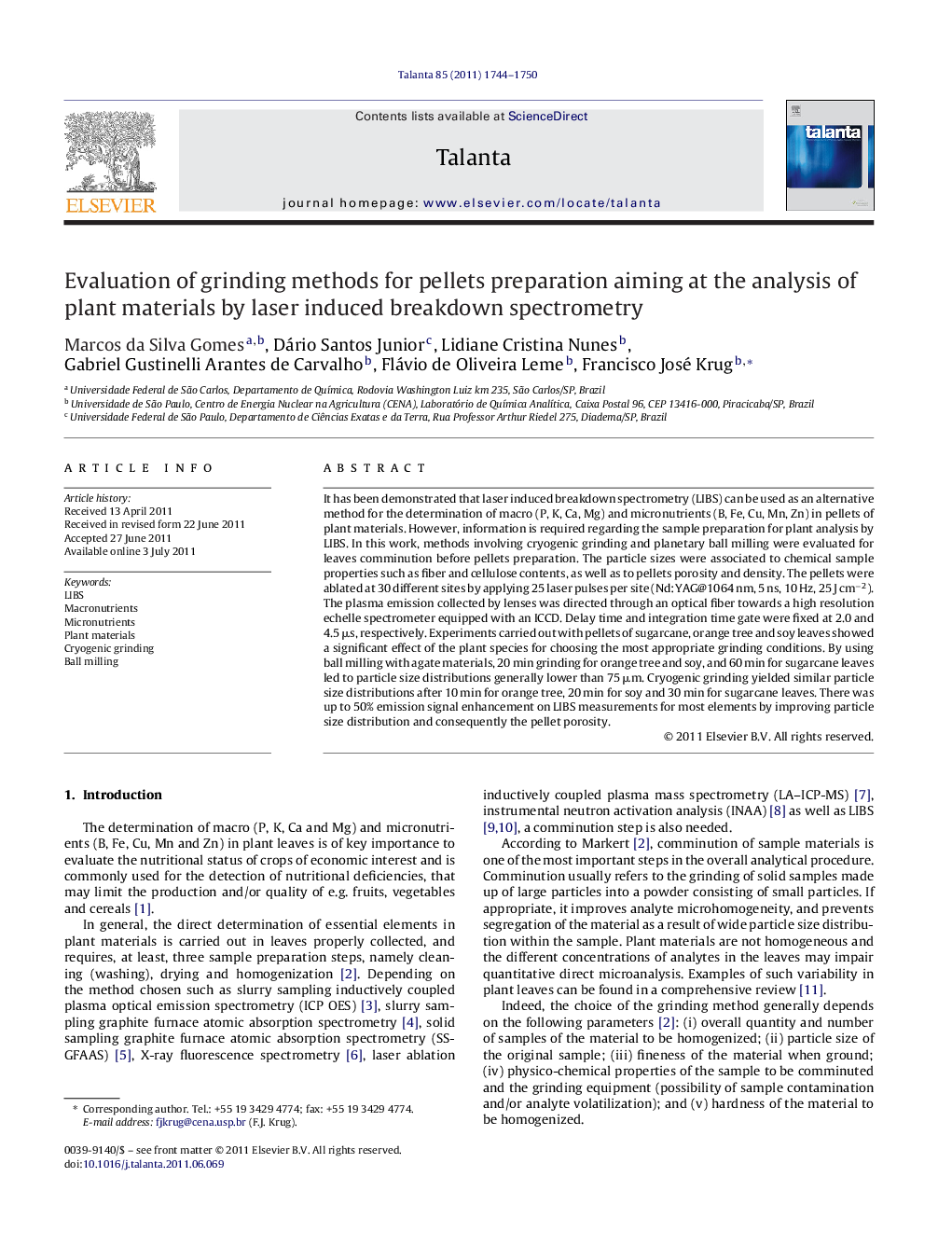| Article ID | Journal | Published Year | Pages | File Type |
|---|---|---|---|---|
| 10559452 | Talanta | 2011 | 7 Pages |
Abstract
It has been demonstrated that laser induced breakdown spectrometry (LIBS) can be used as an alternative method for the determination of macro (P, K, Ca, Mg) and micronutrients (B, Fe, Cu, Mn, Zn) in pellets of plant materials. However, information is required regarding the sample preparation for plant analysis by LIBS. In this work, methods involving cryogenic grinding and planetary ball milling were evaluated for leaves comminution before pellets preparation. The particle sizes were associated to chemical sample properties such as fiber and cellulose contents, as well as to pellets porosity and density. The pellets were ablated at 30 different sites by applying 25 laser pulses per site (Nd:YAG@1064 nm, 5 ns, 10 Hz, 25 J cmâ2). The plasma emission collected by lenses was directed through an optical fiber towards a high resolution echelle spectrometer equipped with an ICCD. Delay time and integration time gate were fixed at 2.0 and 4.5 μs, respectively. Experiments carried out with pellets of sugarcane, orange tree and soy leaves showed a significant effect of the plant species for choosing the most appropriate grinding conditions. By using ball milling with agate materials, 20 min grinding for orange tree and soy, and 60 min for sugarcane leaves led to particle size distributions generally lower than 75 μm. Cryogenic grinding yielded similar particle size distributions after 10 min for orange tree, 20 min for soy and 30 min for sugarcane leaves. There was up to 50% emission signal enhancement on LIBS measurements for most elements by improving particle size distribution and consequently the pellet porosity.
Related Topics
Physical Sciences and Engineering
Chemistry
Analytical Chemistry
Authors
Marcos da Silva Gomes, Dário Junior, Lidiane Cristina Nunes, Gabriel Gustinelli Arantes de Carvalho, Flávio de Oliveira Leme, Francisco José Krug,
